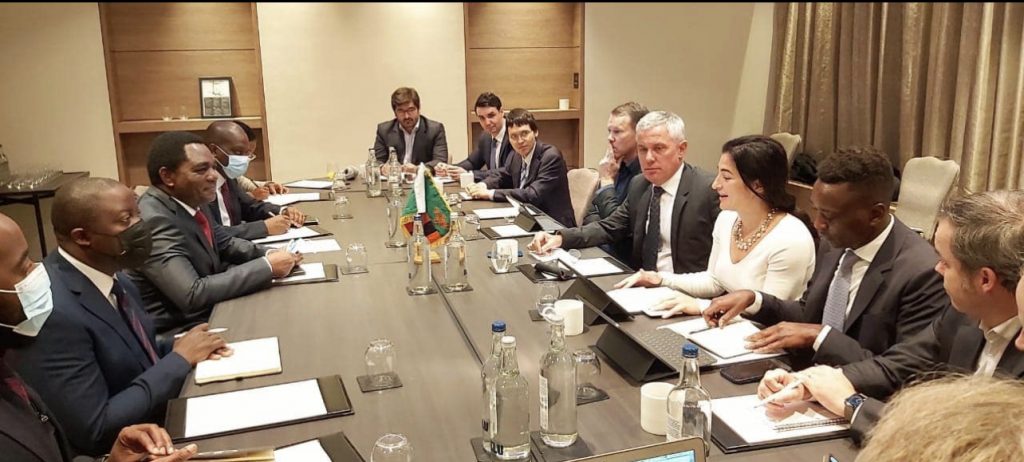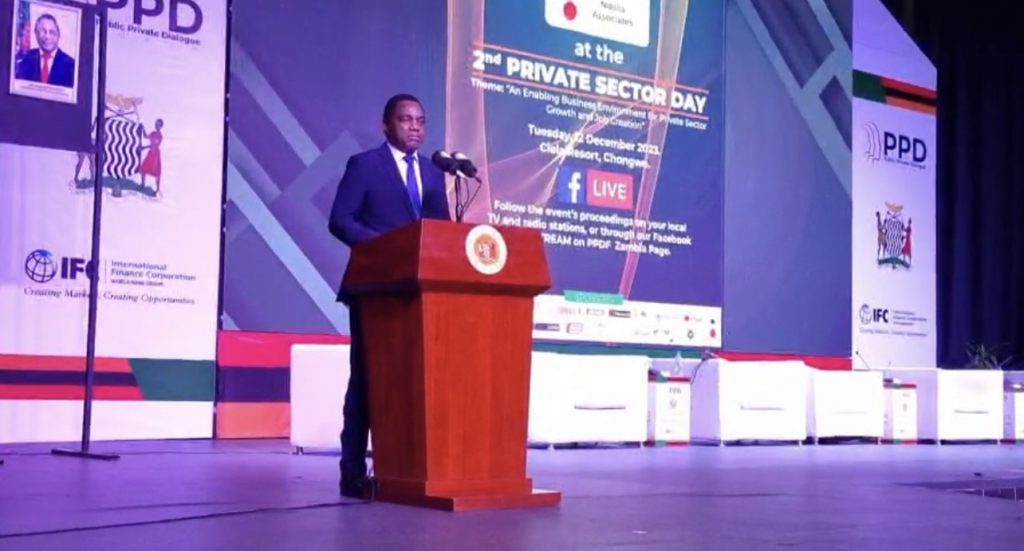Africa’s second largest copper producer Zambia will descend into the festivities with a positive outcome of the recently held International Monetary Fund (IMF) board meeting convened on December 21. The lenders board approved disbursement of the third tranche of the extended credit facility of $187 million bringing the total disbursements to $561 million since the facility was approved on 31 August 2022.
This release of funds comes after a successful ECF review following the Southern Africans nations attainment of key structural benchmarks of the 38 month program. The third tranche gives a Zambia a positive cue in many respects namely, strides towards restoration of fiscal fitness, does open access to further grants by other multilateral partners such as the World Bank and above all, is a positive litmus test for the IMF’s commitment towards supporting the copper producers fiscal restoration program.
In a press release on the lenders website following the Executive Board discussion on Zambia, Deputy Managing Director (and chair of the session) Ms. Antoinette Sayeh commented: “The authorities have maintained their efforts to stabilize the economy despite recurrent external shocks. Continuing to take measures to restore fiscal and debt sustainability, including advancing with the debt restructuring, and implementing reforms are critical to safeguard macroeconomic stability and foster durable and inclusive growth. Zambia’s performance under its Fund-supported program has remained satisfactory, including continued fiscal consolidation—despite lower mining revenues—and structural reform implementation. Sustaining the fiscal consolidation remains crucial. In particular, scaling up efforts to mobilize revenues, including by broadening the tax base and removing exemptions, would help preserve social spending, clear domestic arrears, and address development needs. Public financial management reforms are critical to enhance budget execution and the quality of government spending. The authorities are also making efforts to enhance governance and transparency in public debt management.”
“I am pleased that the IMF Executive Board has upheld the staff review and assessment of progress on economic and financial policies made during the staff visit to Lusaka from 25 October to 08 November. We are encouraged by the IMF’s assessment that despite considerable challenges, the Zambian economy is showing resilience evidenced by positive growth, strong fiscal performance and consolidation and continued constructive engagement creditors on the debt restructuring process, Zambia’s Finance Minister Dr. Situmbeko Musokotwane said in MinFin press release.
At a time the red metal producers grapples with exchange rate woes with a currency on a steep slide, the disbursement does add to the stock of dollar supply in a liquidity constrained environment. The central bank in the copper producer sterilized the market with an aggressive cash reserve hike of 800 basis points to 17% in the quest to reign in on a run away Kwacha in November. Dollar supply has been constrained by weak mining flows following operational hurdles that are forecast to improve into 2024. Seasonal demand for agriculture inputs and that for petroleum products continues to outwit supply adding pressure to the foreign exchange markets.

ON THE CUSP OF A DOLLAR BOND RESTRUCTURE
Zambia is on the cusp of a dollar bond restructure breakthrough after an earlier proposal in November, triggered reservations from the IMF and Official Bilateral Creditor Committee on comparability concerns using the G20 common framework. The copper producer had earlier announced a proposal that would transcend into reissuance of two bonds for $2 billion and $1.135 billion for maturity 2035 and 2053 respectively under an economic base case scenario. However the proposal was rejected by the OCC on the premise that the bondholders would be getting $500 million cash coupon as early as December (in addition to higher coupons during the ECF period) should the proposal have been nodded in the third week of November. This from a valuation perspective, gave this class of creditors a third more in payments compared to the 3 year moratorium that the bilateral creditor memorandum of association prescribed for Zambia to allow it breathing space to re- strategize its economy and ready to pay the $6.3 billion over a two decade period to 2043. The argument has been that private creditors were posed to maximize repayments from Zambia especially in the period that the red metal producer would be on the IMF ECF program with greater reinvestment potential over the period of the bonds.
In a question and answer session the IMF revealed that the revised bondholders proposal was compatible with the debt service agreement despite its rejection by the official creditors committee for failing to pass the comparability test. The Zambian authorities are in the process of revising the proposal to meet the comparability treatment benchmarks as defined by the OCC.

The protraction in the whole restructure process is eroding Zambia’s gains with market fatigue from the wait. President Hakainde Hichilema in key note address at the public private dialogue forum in Zambia’s capital Lusaka re-echoed the need for debt restructure to close expeditiously because its effects do extend to more than what the eye can see, currency depreciation, but has capacity to slow down capital flows despite the investor good will the country has enjoyed.
China and France have committed to assisting the Southern African nation navigate the re-engineering of the Eurobond restructure agreement. Zambia continues to bear the brunt of a default rating on its long term issuer risk for foreign currency which is closely knit to the status quo of the dollar denominated assets. This continues to manifest in higher sovereign premiums above credit pricing contributing to higher cost of capital. Financial institutions continue to access credit lines at higher premiums that factor high price and convertibility risk.
Dollar bonds account for only $3 billion of the total debt stock but remain the stickiest of the lot as it is the only graded. Zambia has nonetheless been upgraded on its local currency ratings by Fitch and Moody’s to ‘CCC+’(from ‘CCC’) and ‘Caa3’ (from ‘Ca’).
The red metal producer is facing growth in an inflationary environment with November consumer price index headlining 12.9% as the kwacha trading north of K25 per unit of dollar. Despite these headwinds Zambia is poised to expand 4.3% in gross domestic product growth this year with a forecast rally to 4.7% next year.
The Kwacha Arbitrageur

